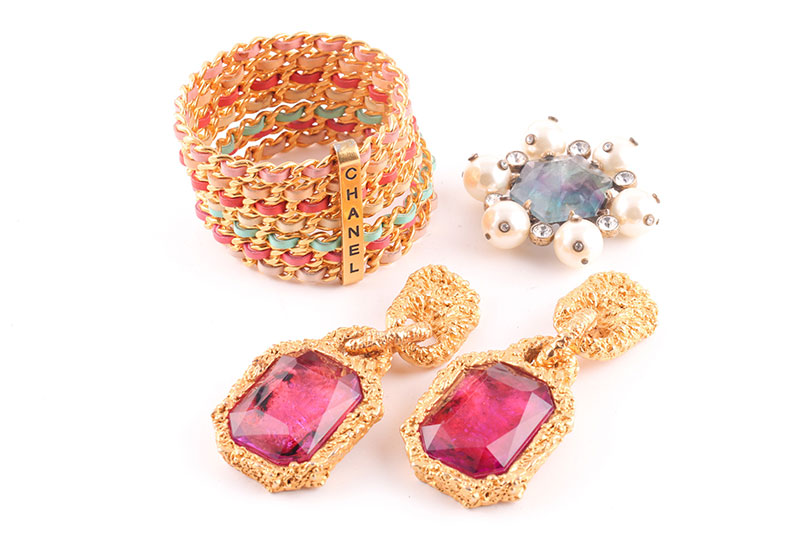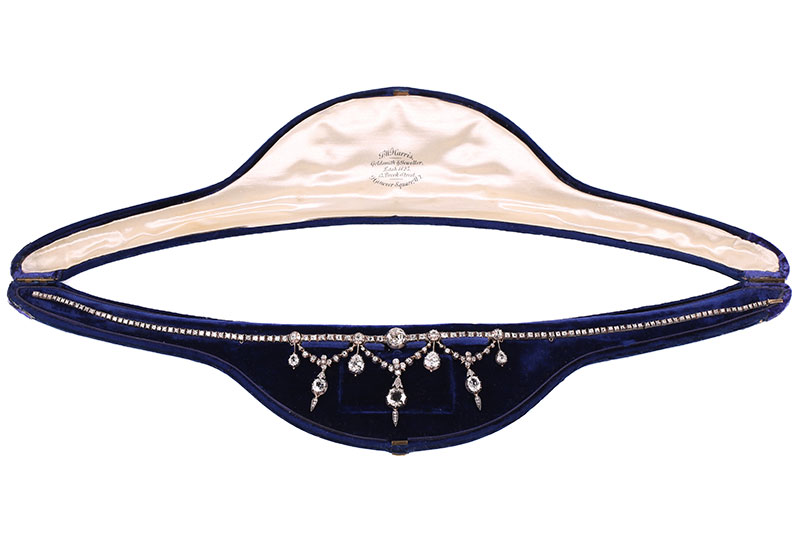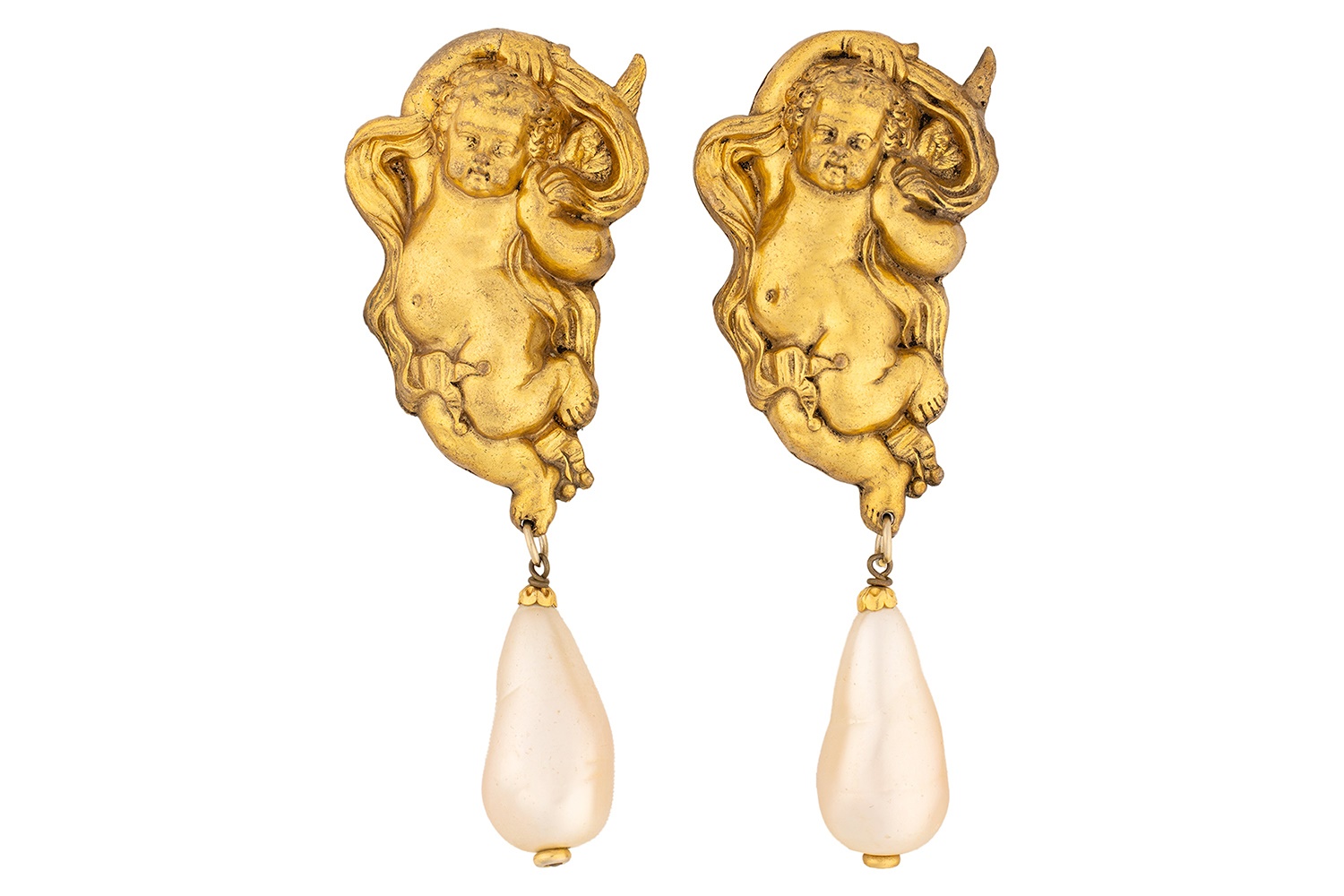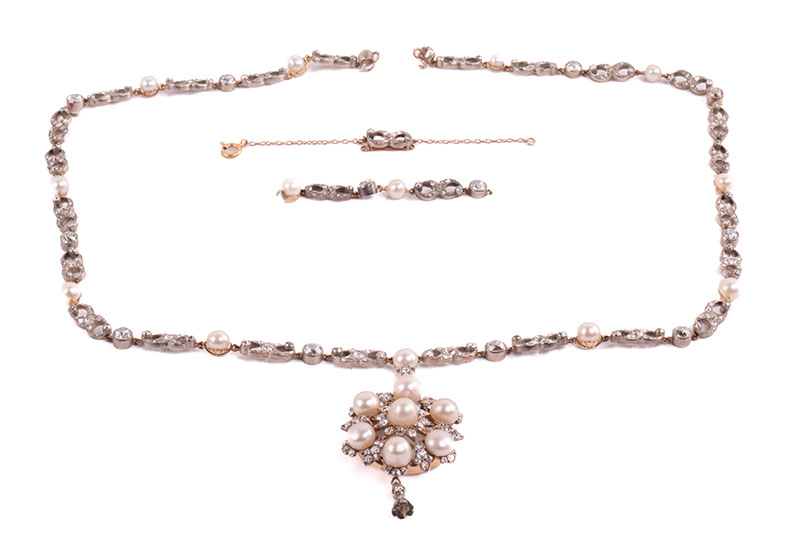How Can You Tell if Jewellery is Real or Costume?
It requires years of experience and knowledge to definitively distinguish a piece of fine jewellery
23/04/2025
There are certain precious moments within the life of a Jewellery Valuer that cause emotions to heighten, huge excitement and the rushing of blood… One such moment is when a jewellery box that seems to contain nothing but endless amounts of costume bead necklaces, marcasite brooches and ivory bangles then magically reveals a 200-year-old memorial brooch – worth thousands of pounds, or a hidden gem such as a large flawless diamond ring – that couldn’t possibly be real… Or could it?
Whether sorting through an old jewellery box, or perhaps wondering about a piece you may have inherited, or recently purchased from a charity shop, we have put together some tips to help identify whether a piece of jewellery is real or costume.
collection of signed French Chanel costume jewellery
An initial assessment of the piece as a whole is a great starting point. Pay close attention to the colours and finish, as well as any scratches which could reveal underlying layers. Are the colours uniform and smooth suggesting a pure metal like gold or silver, or splotchy with different colour edges indicating a combination of alloys or plating. If wearing the piece causes skin irritation or leaves dark marks or green stains on the skin, it is almost certainly costume jewellery. Keep an eye out for any missing stones or broken claws or clasps, the missing stone can reveal a foiled back while bent or broken claws and clasps can offer insight into the quality and durability of the metal. Foiled backs are often used with costume jewellery; however, they were also incredibly popular in Georgian jewellery.
Late Victorian diamond garland necklace
Use a magnifying glass or loupe to look for marks or stamps. On rings this is usually located on the inner band, whilst on necklaces, and bracelets it is usually on the clasp, earrings on the hook or post and pendants to the back or the loop. Silver is marked Sterling or 925, indicating the purity of silver. Gold will be a numerical stamp of 9, 10, 14, 18, 22 or 25K/Kt or 375, 585, 750, 916, 990 or 999. While platinum will be stamped as such, or Pt or PLAT. The use of a precious metal signals a fine “real” piece of jewellery. Examples of stamps found on plated costume jewellery are 1/10_k, 1/20_k, GF (Gold Filled), GB (Gold Bond), GP (Gold Plate), RGP (Rolled Gold Plate), Silver-Plate, English Silver, German Silver, Mexican Silver or Sterling Inlaid. While determining the metal of a piece, you may come across a name or signature. Some of these are easily deciphered such as Cartier or Tiffany, but other names or monograms might require some research.
Chanel Baroque-style cherub and faux pearl drop earrings
A strong magnet can be used to test metal, we recommend a rare earth magnet. Gold, silver, and platinum are not magnetic – however some precious metal pieces can have steel fittings or repairs, so use this method with caution. If the magnet attracts the piece of jewellery, it is probably costume.
If the metal is gold, silver or platinum, any gemstones are likely to be “real”, however, only a qualified gemmologist or expert can determine this for certain. Surface scratches or chips to the stone, as well as a lack of inclusions within the stone can indicate an imitation, although recent imitations have been adding inclusions to appear more genuine. Natural gemstones are far more durable than simulants, although they can still abrade with heavy wear, inclusions or imperfections will usually be present which indicates origin, unless you are incredibly lucky and have a rare flawless stone. Hold the piece up to natural light, natural gemstones will refract the light spreading it, where glass will just reflect the light.
Early 20th-century pearl and diamond pendant necklace
Whilst “real” jewellery will hold value, some costume jewellery can also be valuable. These tips can help you to differentiate “real” jewellery from costume jewellery, but keep in mind that it is a very specialised field fraught with imitations and fakes. It requires years of experience and knowledge to definitively distinguish a piece of fine quality jewellery from a good imitation. Our highly skilled and qualified jewellery specialists here at Dawsons would be delighted to assist with sorting fine jewellery from costume jewellery, whether you have one item or an entire shoebox.
read more
How Do I Know if My Jewellery is Valuable?
Will Diamonds Increase in Value?
How Can You Tell if Jewellery is Vintage?

Nicky Houston
Our Head of Department - Jewellery, Silver & Watches... Nicky is a highly respected Auctioneer & Valuer, who had dreams of becoming an artist. Whilst she may not have made it as a successful artist herself, Nicky has helped many a customer to successfully sell and buy beautiful pieces of jewellery and works of art over her many years working within the auction industry.
Jewellery Silver & Objects of Virtue Watches
Are you thinking of selling any costume jewellery?
With a global audience of more than 10 million known bidders, Dawsons can secure the highest prices.
Get in touch with an expert Valuer for confidential sales advice, we would be delighted to help you:
0207 431 9445 / [info@dawsonsauctions.co.uk](mailto:info@dawsonsauctions.co.uk)



